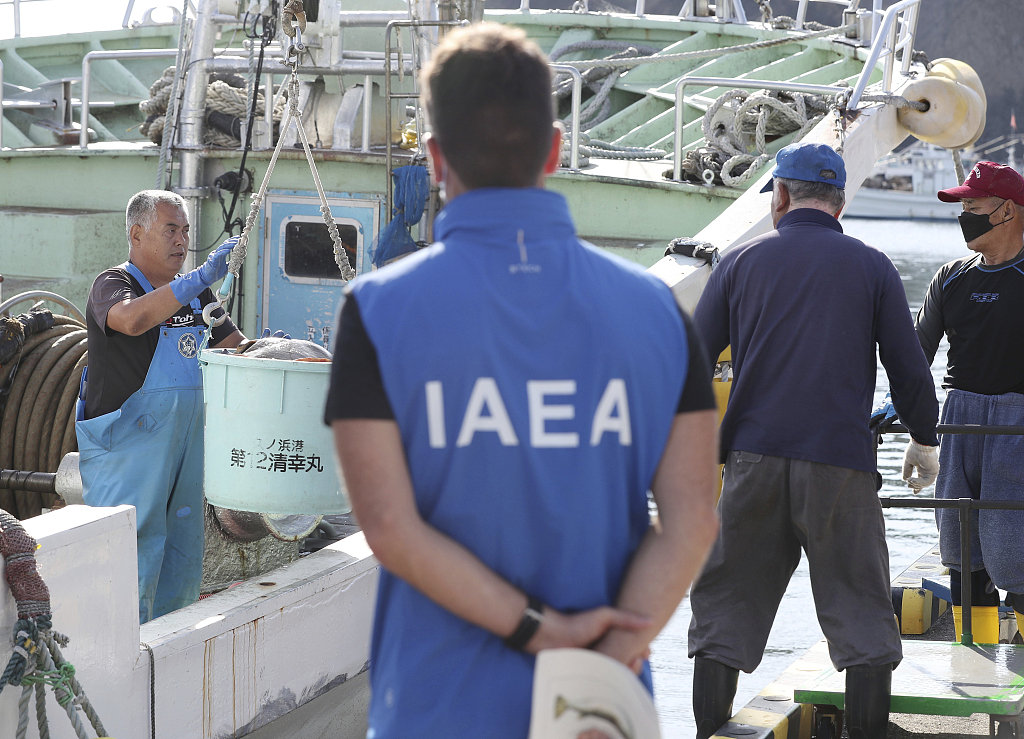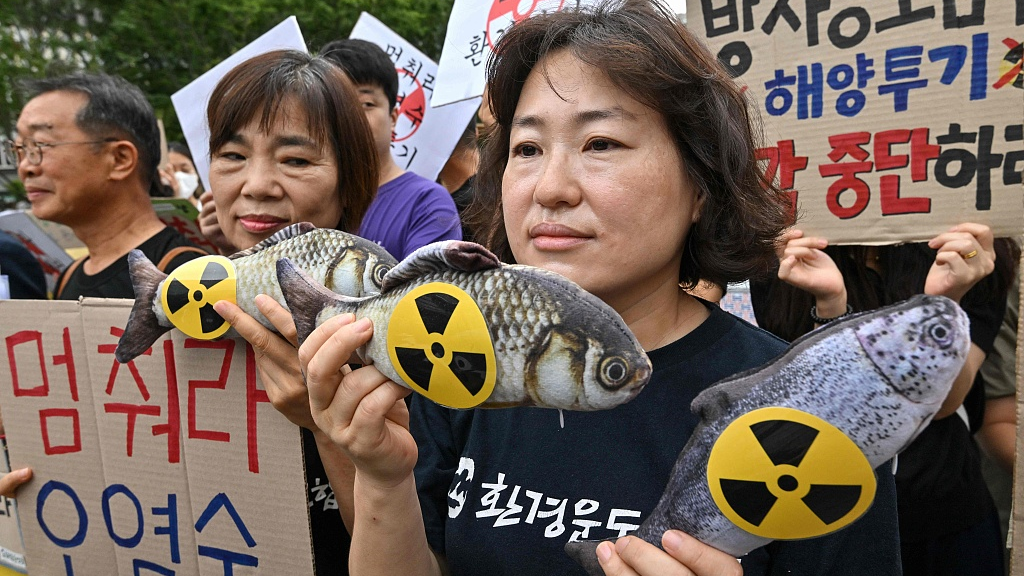
International Atomic Energy Agency (IAEA) officials inspect a landing of seafood sampled for inspection in Iwaki City, Fukushima Prefecture, Japan, October 19, 2023. /CFP
International Atomic Energy Agency (IAEA) officials inspect a landing of seafood sampled for inspection in Iwaki City, Fukushima Prefecture, Japan, October 19, 2023. /CFP
The third batch of Fukushima nuclear-contaminated water to be released during Japan's third round of ocean discharge contains radionuclides including carbon-14, cobalt 60, strontium-90 and others, according to pre-discharge test results released by the Tokyo Electric Power Company (TEPCO).
The nuclear-contaminated wastewater from the crippled Fukushima Daiichi nuclear power plant, after advanced liquid processing system (ALPS) treatment, must enter the measurement and confirmation facility and wait for pre-discharge test results before being discharged into the ocean.
The measurement and confirmation facility is split into three groups of 10 tanks with each of the groups used on a rotating basis as receiving tanks, measurement and confirmation tanks, and discharge tanks.
Despite mounting concerns and opposition among local fishermen as well as from other countries, TEPCO said that preparations for the third round of ocean discharge will begin after the second round of discharge is completed and relevant maintenance and confirmation operations are carried out.

South Korean environmental activists hold fish dolls with radioactive signs during a rally against the Japanese government's plan to release wastewater from the Fukushima-Daiichi nuclear plant into the Pacific Ocean, at Gwanghwamun Square in Seoul, August 24, 2023. /CFP
South Korean environmental activists hold fish dolls with radioactive signs during a rally against the Japanese government's plan to release wastewater from the Fukushima-Daiichi nuclear plant into the Pacific Ocean, at Gwanghwamun Square in Seoul, August 24, 2023. /CFP
At present, the 10 tanks in Group B were emptied in the first round of discharge starting on August 24. Meanwhile, the 10 tanks in Group C were confirmed to meet the discharge standards on September 21, and the discharge started on October 5.
The sampling of the nuclear wastewater stored in Group A tanks for the third round of discharge was completed on July 10. The analysis results showed that they contained trace amounts of carbon-14, cobalt 60, strontium-90, iodine-129 and cesium-137, of which strontium-90 was not detected in the second round of discharge from October 5, according to reports released on Thursday by TEPCO.
TEPCO claims that its ALPS facility, a multi-nuclide removal system, can remove 62 radioactive substances except tritium, but it was found that about 70 percent of the water in the storage tanks contained non-tritium radionuclides at a concentration exceeding the regulatory standards applicable for discharge into the environment.
(With input from Xinhua)